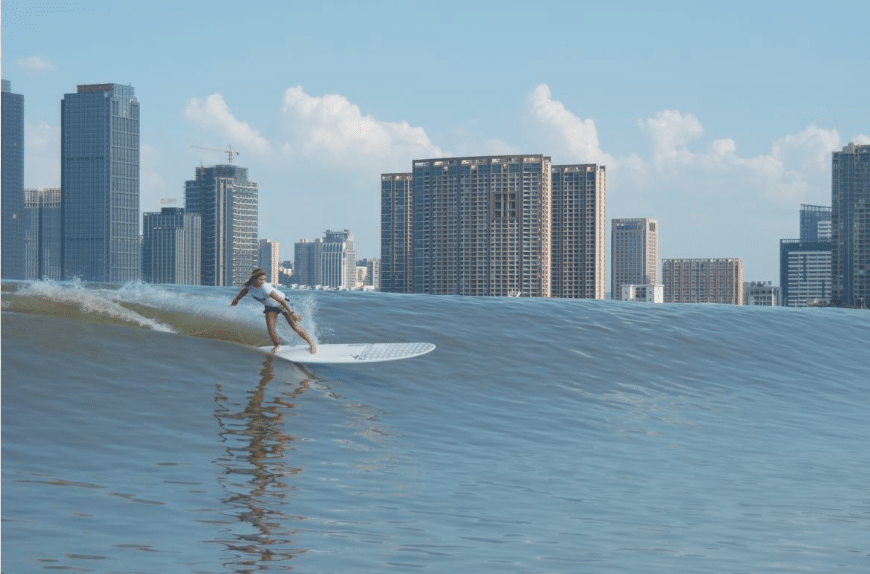What are tidal bores?
They are not “boring” at all! Tidal bores manifest as surging walls of water, defying the typical flow of a river or estuary. Unlike regular tides, where water moves in a predictable ebb and flow, tidal bores occur when the incoming tide collides with the outgoing river current. This collision triggers a sudden surge of water, creating a wave that moves upstream against the river’s flow.
The Mechanics Behind a Tidal Bore
Tidal bores can be easily explained. The formation of tidal bores relies on several factors: the shape of the estuary or river, the topography of the riverbed (bathymetry), the volume of water, and the tidal range. As the tide rises, it forces water into a narrowing channel, compressing the water and creating a wave. When this wave meets the river’s outgoing flow, it forms the dramatic surge characteristic of tidal bores.

Global Hotspots of Tidal Bores
Some of the most renowned tidal waves across the globe include:
- Qiantang River, China: The Qiantang River boasts one of the world’s largest and most impressive tidal bores, attracting spectators during the Mid-Autumn Festival. Waves here can reach astonishing heights, and the festival’s celebrations often revolve around this natural spectacle.
- Severn Estuary, United Kingdom: The Severn Bore is another famous example, drawing surfers and enthusiasts aiming to ride the wave as it travels upstream. It’s a unique opportunity for thrill-seekers to surf against the current.
- Amazon River, Brazil: The Pororoca, as it’s known locally, occurs in the Amazon River and can reach impressive speeds, creating a wave that can travel up to 500 miles inland. Read more about it here.

The internet is full of incredible tidal bore videos. Check out this video of 2011 of the Qiantang Tidal Bore, also named “Silver Dragon”, the “Bono” barreling wave from Rip Curl with Tom Curren or this more recent longboard video from Jamie O’Brien in Alaska. Or a foiling
Fascination and Challenges
The allure of tidal waves lies in their rarity and raw power, captivating both scientists and surfers. However, their forcefulness presents challenges, especially for ecosystems and human settlements along affected rivers. Tidal bores can lead to erosion, changes in sediment distribution, and alterations in habitats for various species. Efforts to balance the preservation of these natural wonders with human enjoyment are underway. Conservation initiatives aim to protect the delicate ecosystems affected by tidal bores while allowing responsible tourism.
When to go
For those seeking to witness the spectacle of tidal bores, planning is essential. Local knowledge, tidal charts (check for spring tides, monsoons), and expert guidance often ensure a safer and more rewarding experience. Many regions have embraced tidal bore festivals, incorporating these natural events into cultural celebrations,. Like in any surf endeavour, multiple factors make or break your surf session. Therefore a wave pool is the safer bet to get waves.
Conclusion
Tidal bores blend the power of tides and rivers into an unexpected scene for surfing waves, just like wave pools. They offer a spectacle that mesmerizes and challenges our understanding of the natural world. Balancing admiration with conservation efforts of the rivers ensures future generations can marvel at these wonders while preserving the delicate ecosystems they influence.
So what’s in it for AllWaves?
At AllWaves, we are inspired by these creations & forces of waves in nature. Tidal waves included. We can pre-condition waves with our proprietary algorithm & wavemaker. This means we cannot only choose height, but also speed AND shape.
This results in endless combinations and really the possibility to create “all waves” for all surfers. That’s why we call our employees “waveshapers”.
Hope you enjoyed our read,
Keep surfing!
Het bericht Waves Explained: Tidal Bores verscheen eerst op AllWaves.